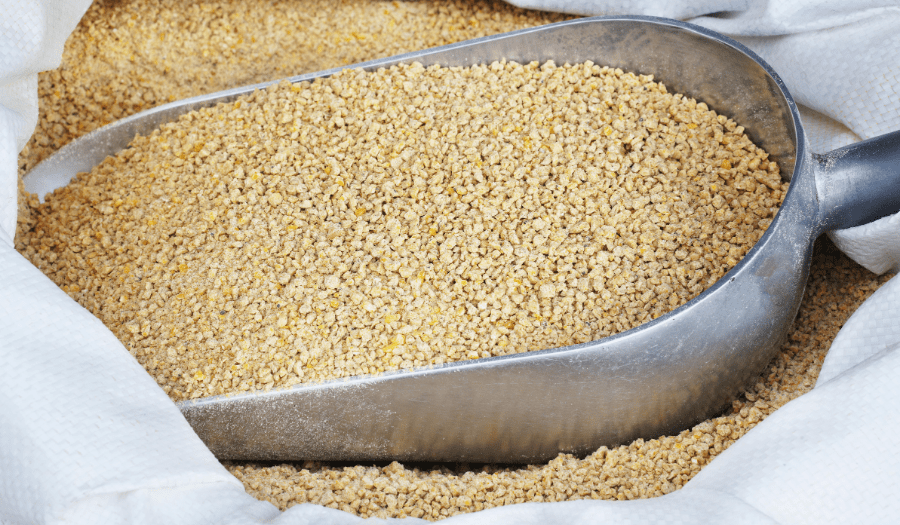
The formulation of animal nutrition products based on essential oils requires a great deal of know-how, and means that rules have to be followed before stable, industrialisable solutions can be achieved, with a guarantee of the bioavailability of the active ingredients and the correct dosage once in the feed or drinking water.
In this article, find out how to formulate with essential oils.
Download the guide to find out more about essential oils in animal nutrition!
A framing or drawing up exhaustive specifications is an essential prerequisite for good installation:
Once performance targets are identified and setthe formulation work can begin.
The choice of essential oils used will be based on the desired effectiveness. To optimise effectiveness, several essential oils can be combined together This forms the "heart".
The essential oils chosen must also be authorised by the regulations and be listed in Annex I of the register of additives in EC Regulation 1831/2003. Price and availability are also factors in the composition of this core.
Once the core has been defined, we can move on to the substrate. Two types of carrier are preferred in animal nutrition:
The powder forms use the adsorbent or absorbent properties of certain excipients of mineral origin (calcium carbonate, diatomaceous earth, silica, clays) or plants (wheat bran, corncob powder) to deposit and fix the essential oil or the "core" made beforehand.
Depending on the chemical properties of the excipients, the formula can contain up to 50% of essential oils.
It should be noted that essential oils, when used in large doses, can have adverse or even toxic effects. For example, it is advisable to base your use on EFSA advice, where available, in order to adapt the quantity of the essential oil or its main active ingredient to the target species.
Controlling the application process is also a key factor in obtaining a homogeneous mix.. During the mixing and homogenisation phase, the speed at which the mixers rotate, the gentleness with which they are stirred and the slow integration of the essential oils are all factors which guarantee a powder of regular granulometry and a correct dosage of active ingredients.
Once it has been mounted, it is important to pack the preparation immediately in airtight packagingThis prevents the loss of the lightest volatile compounds and guarantees the quality of the product in premixes or complete feeds.
For formulas in liquid form, the solid excipient is replaced by a mixture of water and solubiliser. The quantities chosen for each ingredient are the result of precise work to guarantee the homogeneity of the mixture as such and its good solubilisation in the final liquid.
In both cases, the choice of packaging must take account of its technical characteristics to ensure good resistance to chemical attack by certain essential oil compounds.
Preparations manufactured and packaged in this way can be transported safely, and used as a premix or supplementary feed (in feed, in drinking water, in milk preparations for young ruminants).